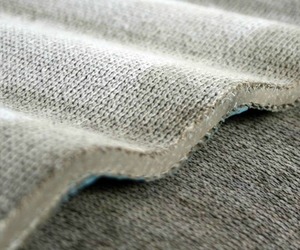 |
| Image from www.materialicious.com |
Concrete canvas is a great innovation from engineering students Will Crawford and Peter Brewin, that feels like a normal canvas but put some water on it and it hardens in a few hours to give you a robust construction. The cloth, impregnated with concrete, is easy to transport and just needs water and some air to complete a construction. It doesn’t need heavy equipment, good working surfaces and is not labour intensive at all. You will need lots of water, which need can be sourced from a bore well or even the sea, an air blower (if the construction is big and you are in a hurry) and some labour to put the cloth in desired places. You can roll the sheets on to slopes and it will take up the contour of the land, making it truly easy to use.
 |
| Image from www.techeblog.com |
Related articles
- Concrete Canvas Furniture (makezine.com)
- Inflatable Tent Turns Into Concrete With Water [Video] (jtm71.wordpress.com)
- Concrete tent will shield you from the zombie apocalypse (dvice.com)



3 comments
You are most welcome!
Thank you for reblogging our post!
Reblogged this on James' World 2.